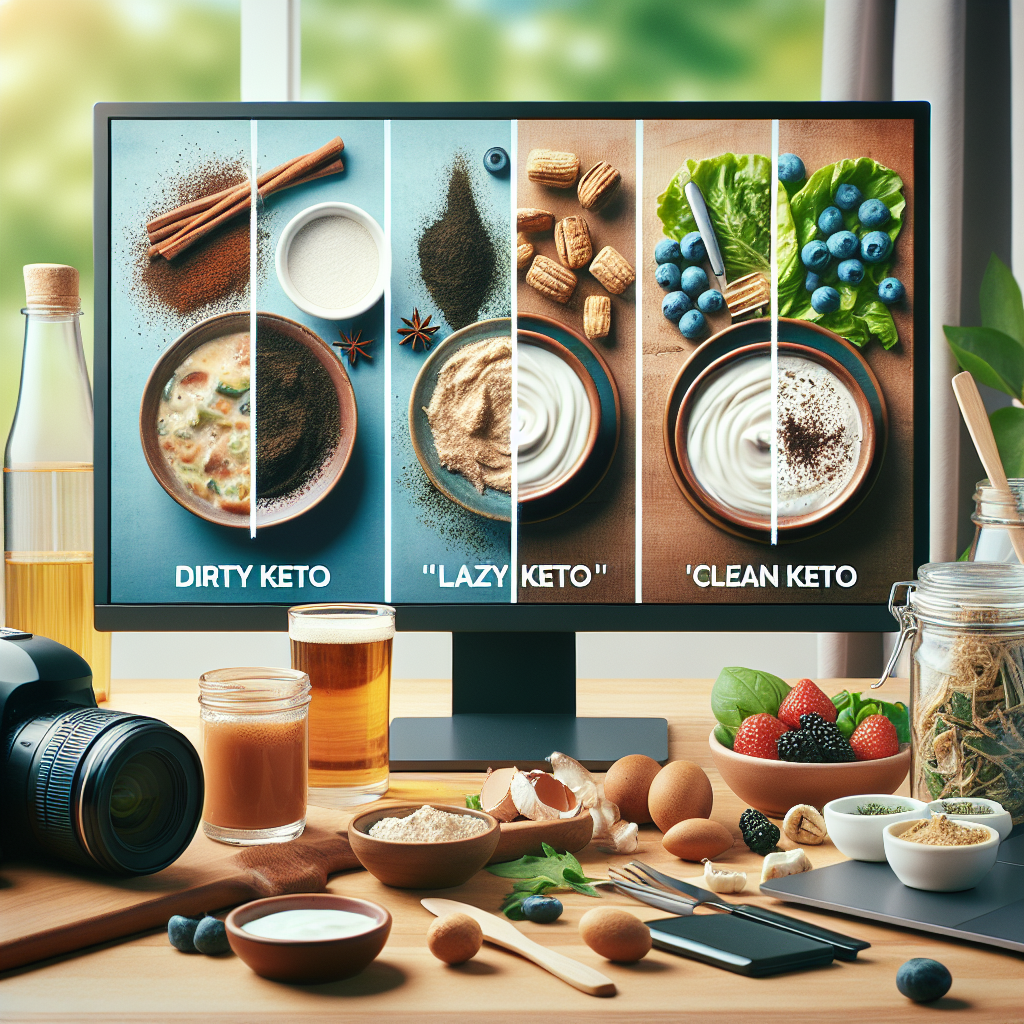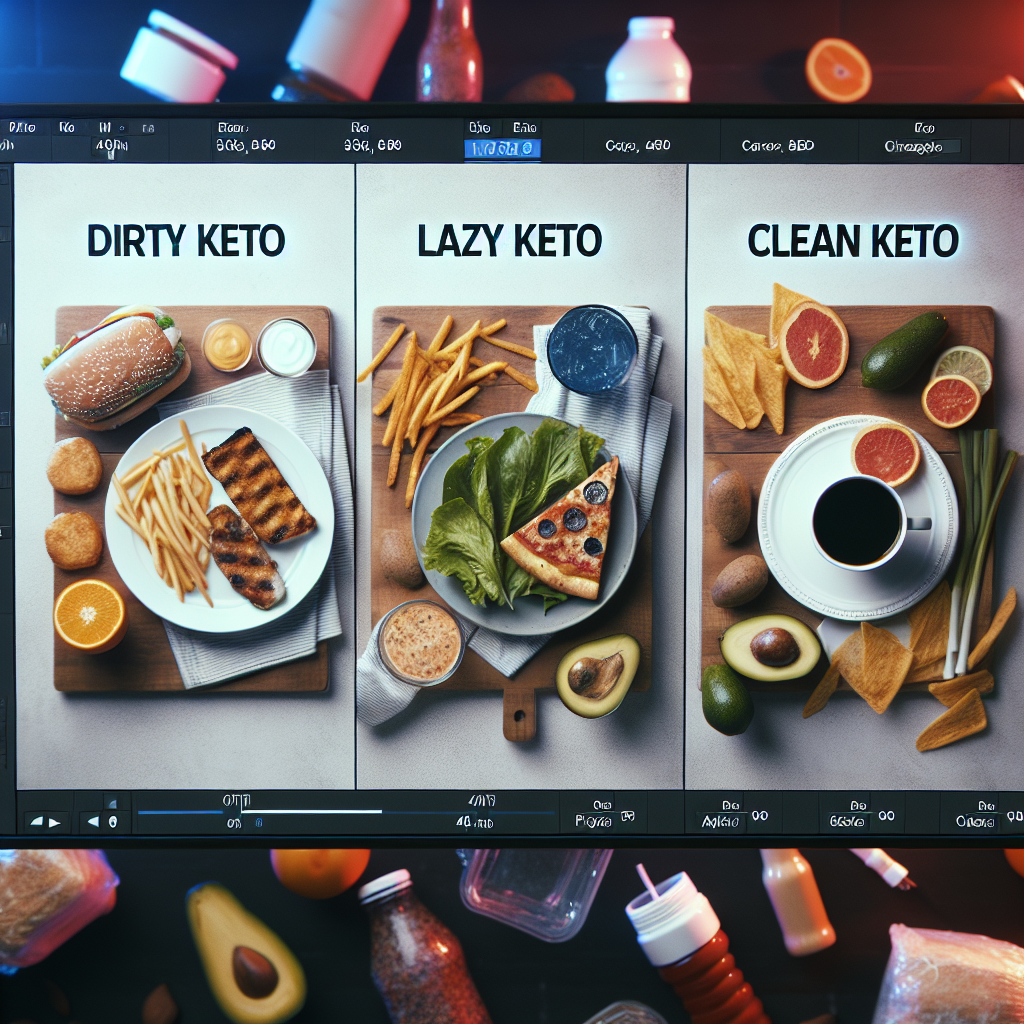
-
Table of Contents
Dirty Keto, Lazy Keto & Clean Keto Comparison- What’s the Difference?

The ketogenic diet, popularly known as the keto diet, has gained significant attention in recent years due to its potential benefits for weight loss, diabetes management, and overall health. However, as with any diet, there are different approaches to following a keto diet. In this article, we will delve into three popular variations: Dirty Keto, Lazy Keto, and Clean Keto. We will compare these diets, highlighting their differences, benefits, and potential drawbacks.
Understanding the Keto Diet
Before we delve into the different types of keto diets, it’s essential to understand what the keto diet is. The ketogenic diet is a low-carb, high-fat diet that aims to shift your body’s metabolism from burning carbohydrates to burning fats for energy. This metabolic state is known as ketosis.
The standard ketogenic diet typically involves consuming 70-75% of your daily calories from fat, 20-25% from protein, and only 5-10% from carbohydrates. This drastic reduction in carbohydrate intake forces your body to burn fat for fuel, leading to weight loss and other potential health benefits.
Dirty Keto
Dirty Keto follows the same macronutrient breakdown as the standard ketogenic diet, but it doesn’t focus on the quality of the food. As long as the food fits within the macronutrient ratios, it’s considered acceptable on the Dirty Keto diet. This means that processed foods, fast foods, and artificial sweeteners, which are typically discouraged on a healthy diet, can be consumed on a Dirty Keto diet.
For example, a person following a Dirty Keto diet might opt for a fast-food burger without the bun for lunch, a bag of pork rinds for a snack, and a diet soda for a drink. While these choices fit within the macronutrient ratios, they lack the nutrients found in whole, unprocessed foods.
Pros and Cons of Dirty Keto
- Pros: The Dirty Keto diet is easy to follow and requires less meal planning and preparation. It can also lead to quick weight loss due to the low carbohydrate intake.
- Cons: The Dirty Keto diet can lead to nutrient deficiencies and long-term health problems due to the consumption of processed and fast foods. It also doesn’t promote healthy eating habits.
Lazy Keto
Lazy Keto is a less strict version of the standard ketogenic diet. It focuses on keeping the carbohydrate intake low (below 20-50 grams per day) but doesn’t strictly monitor the intake of fat and protein. This approach is considered “lazy” because it doesn’t require meticulous tracking of macronutrients.
For example, a person following a Lazy Keto diet might have a spinach and cheese omelet for breakfast, a salad with grilled chicken for lunch, and a steak with a side of broccoli for dinner. They might not know the exact macronutrient breakdown of their meals, but they’re keeping their carbohydrate intake low.
Pros and Cons of Lazy Keto
- Pros: Lazy Keto is easier to follow than the standard ketogenic diet and can still lead to weight loss and other health benefits associated with a low-carb diet.
- Cons: Without careful tracking of macronutrients, it’s easy to overconsume protein and underconsume fat, which can prevent the body from entering ketosis. It also might not lead to as significant weight loss as the standard ketogenic diet.
Clean Keto
Clean Keto, also known as strict or traditional keto, not only focuses on the macronutrient breakdown but also emphasizes the quality of the food. It encourages the consumption of whole, unprocessed foods and discourages the intake of processed foods, artificial sweeteners, and unhealthy fats.
For example, a person following a Clean Keto diet might have a breakfast of eggs and avocado, a lunch of salmon with a side of leafy greens, and a dinner of grass-fed beef with a side of asparagus. They’re not only keeping their carbohydrate intake low but also consuming nutrient-dense, unprocessed foods.
Pros and Cons of Clean Keto
- Pros: Clean Keto promotes overall health and well-being by encouraging the consumption of nutrient-dense foods. It can lead to significant weight loss and other health benefits associated with a low-carb, high-fat diet.
- Cons: Clean Keto requires careful meal planning and preparation. It can also be more expensive due to the emphasis on high-quality, unprocessed foods.
Conclusion
In conclusion, Dirty Keto, Lazy Keto, and Clean Keto are all variations of the ketogenic diet that differ in their approach to food quality and macronutrient tracking. While all three can lead to weight loss and other health benefits associated with a low-carb diet, they each have their pros and cons.
Dirty Keto is easy to follow but can lead to nutrient deficiencies and doesn’t promote healthy eating habits. Lazy Keto is also easy to follow and doesn’t require meticulous tracking of macronutrients, but it might not lead to as significant weight loss as the other two diets. Clean Keto promotes overall health and well-being but requires careful meal planning and can be more expensive.
Ultimately, the best approach depends on your individual health goals, dietary preferences, and lifestyle. It’s always recommended to consult with a healthcare professional before starting any new diet plan.